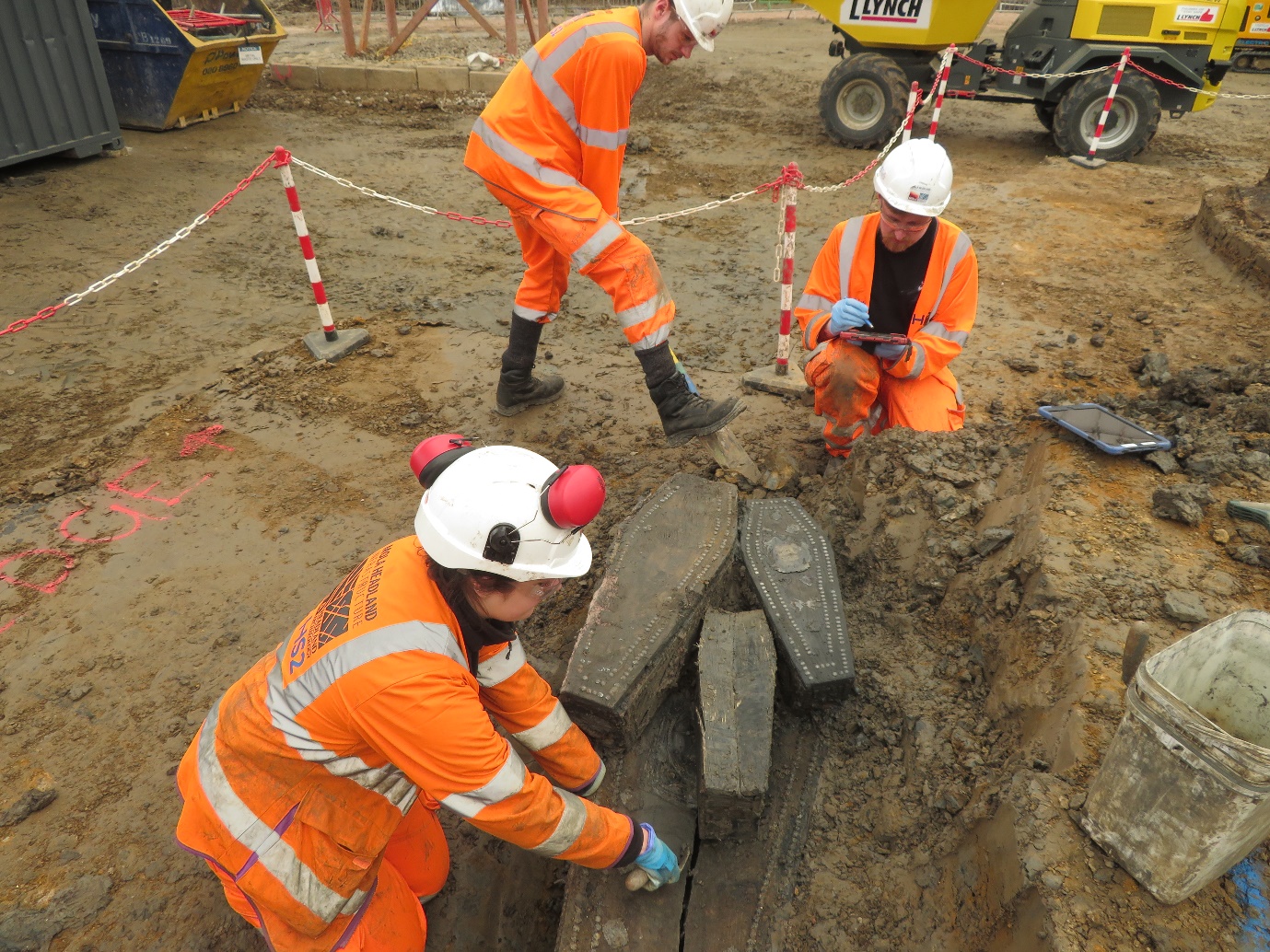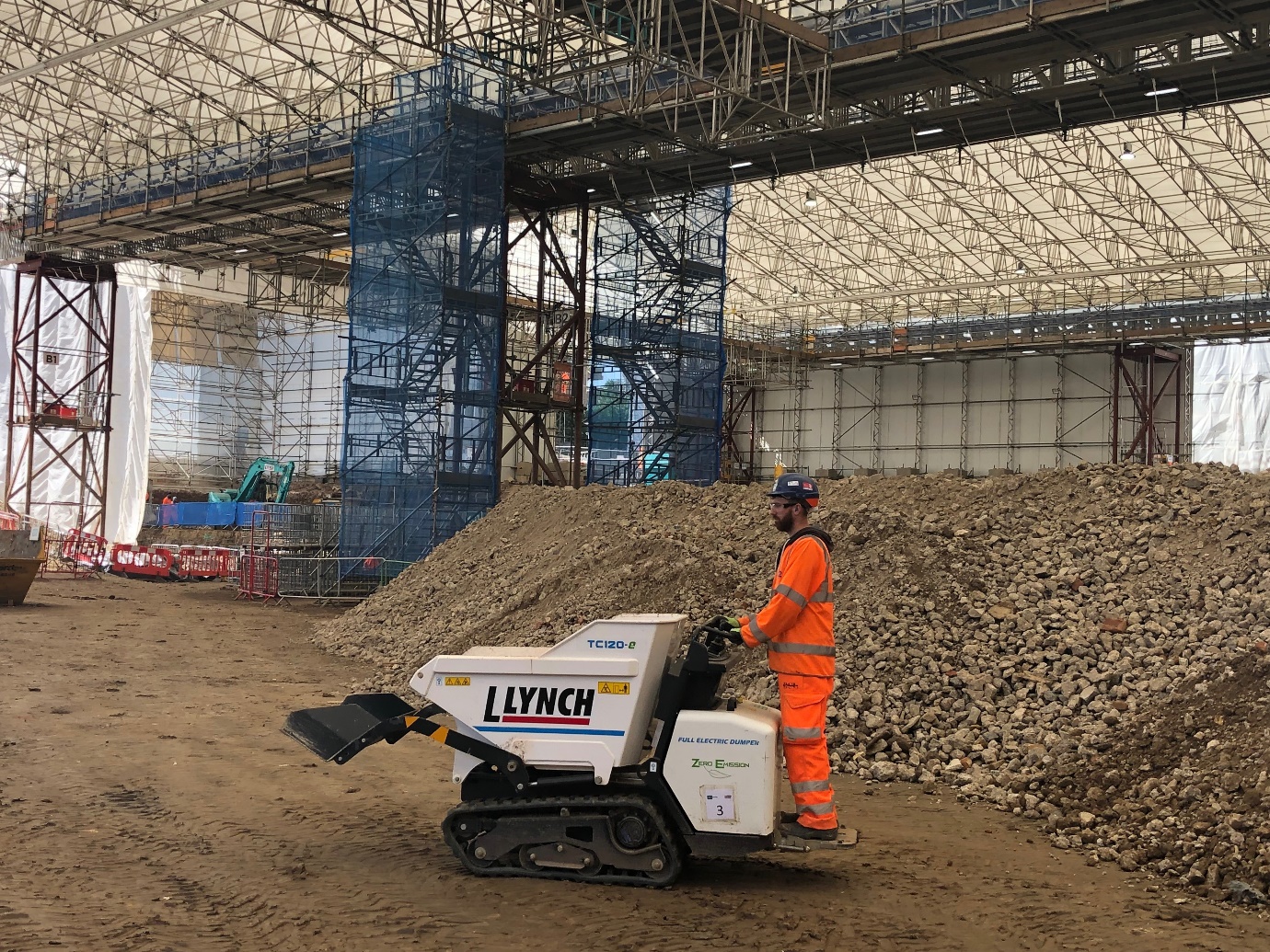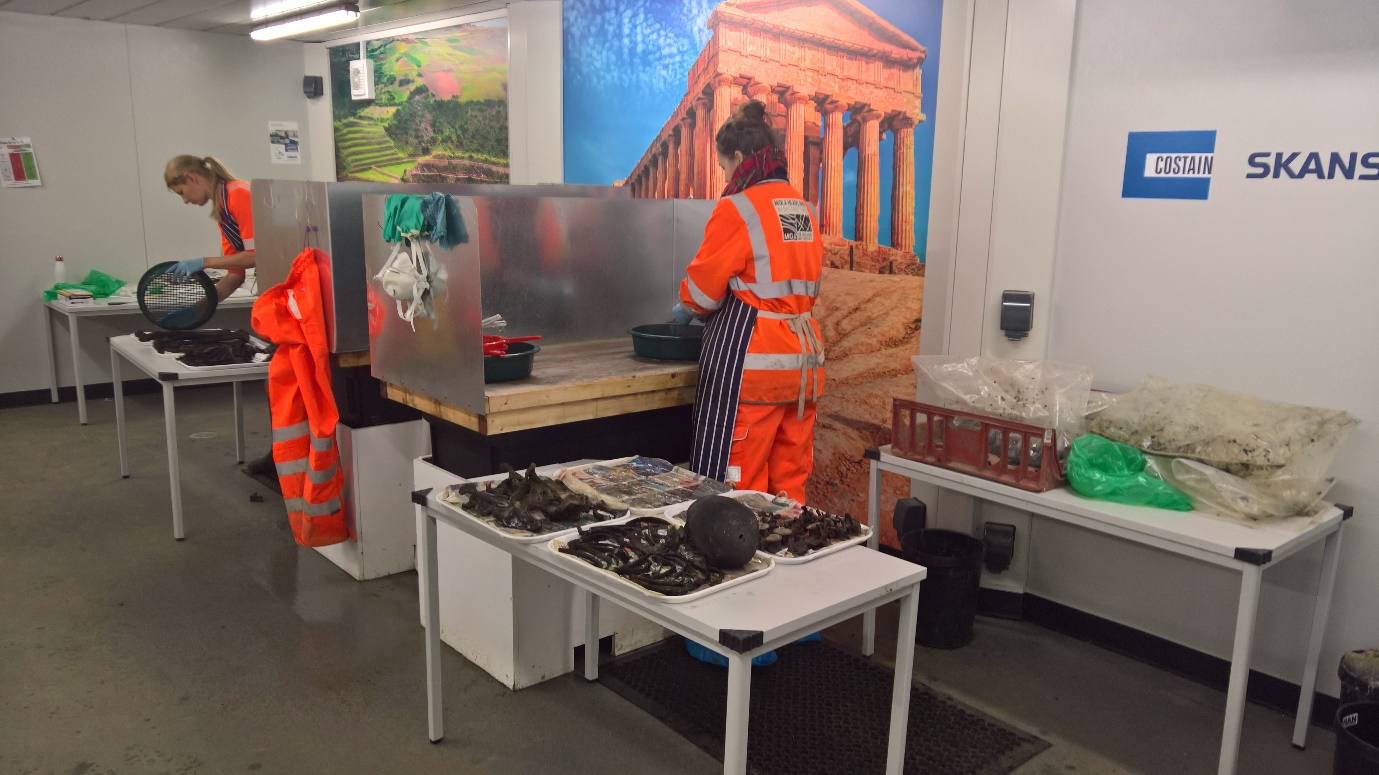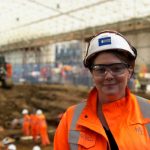Managing Occupational Health risks in archaeology
Archaeology is traditionally a challenging, hands on and physical job with the potential to present a number of occupational health challenges. By strategically examining activities and work streams it has been possible to introduce new tools and techniques to reduce harm and improve productivity in both fieldwork and laboratory environments.
Provision of small electric plant, and supporting teams, to manage spoil reduced occupational health and musculoskeletal issues on site and also increased morale and productivity by a factor of five. Zero accidents or incidents were reported in c9400 person hours worked in the bespoke laboratories and tools and techniques were adopted by the archaeological sub-contractor were applied across other HS2 projects and work sites.
This learning legacy outlines the various measures employed to reduce occupational health risk in an archaeological excavation and will be of interest to future projects developing their H&S and Wellbeing plans in order to mitigate common risks in non-standard construction functions such as archaeology.
Background and industry context
Commercial archaeology as a discipline is relatively new and has existed for c40 years. During this time, the scale and scope of archaeological works have grown in tandem with the many major infrastructure projects they support. At HS2 Enabling works in Area South, a major programme of works within a large post-medieval burial ground provided the opportunity to re-evaluate some of the tools and methods employed to eliminate musculo-skeletal and occupational health risks.
Occupational Health and Archaeological Activities
During the archaeological excavation at St James’s Gardens, activities centred on two key work sites. The primary work site was the archaeological dig area itself. Encompassing an area of 11,000m2, the excavation was staffed by over 200 individuals from a variety of disciplines, including osteologists, archaeologists, engineers and surveyors. These were supported by exhumation operatives, scaffolders, plant operators and banksmen. The secondary work site was the bespoke archaeological labs which were designed by Costain-Skanska Joint Venture (CSjv) – the Enabling Works Contractor – to accommodate a specialist team of osteology specialists, trainee ECOs or Early Career Osteologists and Archaeological finds specialists who were assessing and managing human remains and associated artefacts as they were recorded and removed from site.
Managing Occupational Health in Archaeological fieldwork
Schedule 20 of the High Speed Rail Act 2017[1] and associated Undertakings and Assurances, required that all excavation of human remains be carried out by hand and without direct impact through mechanical intervention. It was clear from the outset that with an estimated 34,000m3 of consolidated London clay to be excavated within the burial during the discharging of the archaeological works, that management of occupational health risks needed to be placed at the forefront of the focus when seeking to eliminate harm. Within the standard archaeological safety processes key activities which have the potential to lead to occupational health and safety risks during archaeological activities are:
- Repetitive strain from activities such as shovelling, trowelling and filling wheelbarrows
- Bending/crouching
- Stretching/ reaching
- Slips, trips and falls
- Heavy lifting
- Pushing wheelbarrows as part of spoil management
- Carrying/ transportation of heavy objects including environmental samples
The engineering team worked with the archaeological contractor to introduce LEAN and ergonomic processes to reduce risk and streamline activities to maximise the time able to be spent on archaeology tasks. Multiple workstations were set up on site to ensure the team had easy access to small tools, finds bags and other archaeological staples to reduce motion across site which substantially reduced slips, trips and falls. Figure 1 demonstrates.

All electric one tonne wheelbarrows with front loading capacity were provided (see Figure 2) to remove the need for traditional wheelbarrows and reduce manual handling activities ensuring that the specialists were able to optimise their time on task.
Small 1.9 tonne all electric 360 tracked excavators were provided to support ground reduction and manage spoil. This substantially reduced hand digging where no archaeology was present and increased productivity by a factor of five (archaeological team members excavation rate increased from 1m3 per person per day to 5m3 per person per day at the peak of programme.)
Electric barrows were also used to carefully transport bulk soil samples and archaeological finds off site at the end of each day. Lockable tool chests were deployed at the edge of each of the four archaeological areas so that tools and equipment could be safely left on site at the end of each day. Additional tooling was purchased which was more suited to individuals’ personal needs (size/weight of shovels, mattocks etc). By ensuring that the team focused on activities which were specifically archaeological, time on task was increased and occupational health risk was greatly reduced. Archaeological sub-contractor – MOLA Headland Infrastructure – were empowered to support these measures and chose to engage an occupational health specialist to work with the fieldwork team.

Managing Occupational Health in Archaeological labs
Archaeological excavation is just the first part of a wider suite of archaeological activities that take place to realise the full academic and public benefit of any dig. Archaeological finds need to be cleaned, catalogued, conserved, and assessed and analysed in the Archaeological lab (see Figure 3). By applying LEAN and ergonomics to a four-step archaeological workspace, the Enabling Works Contractor was able to improve working conditions and reduce occupational health risks during post-excavation activities. Standard ergonomic data was used to drive decision making to be more accommodating to people of differing sizes and mitigating the risk of MS injury [2].[3]
- Ergonomically designed shelving designed for access by 5th centile adult females to reduce stretching, reaching and ad hoc work at height
- Ergonomically design washing stations adjustable to the height of the user
- Ergonomic tooling for osteological finds processing
- Anti-fatigue matting for those carrying out standing work activities
- Radio and bright archaeology themed decals to improve moral

Lessons learned and successes
Provision of small electric plant and supporting teams to manage spoil increased morale and productivity by a factor of five as well as reducing occupational health and musculoskeletal issues on site. Bespoke labs allowed iterative data flow to site to improve excavation research agenda and saved £400,000 of post-excavation costs. Zero accidents or incidents reported in c9400 person hours worked in the bespoke laboratories and tools and techniques were adopted by the archaeological sub-contractor across other HS2 projects and work sites.
Recommendations
Remember that archaeological fieldwork activities are labour intensive. For large scale archaeological programmes of work you should give early consideration to location of welfare, type of welfare (keeping in mind your archaeological workforce may be 50% female), walking routes and storage for archaeological finds and bulk samples. Providing bespoke areas for research and lab work can reduce occupational health risks and enhance public benefit and academic outputs earlier in the process and reduce post-excavation costs.
Acknowledgements
Works designed and managed by Costain-Skanska JV with Costain In-house Engineering, Palmers Scaffolding Ltd, RDG, Penmark Consulting, Wingate Electrical Plc, MOLA Headland Infrastructure, TCS Exhumations, LLynch Plant Hire and Haulage Ltd and M O’Brien Plant Hire
References
[1] High Speed Rail (London – West Midlands) Act 2017 – SCHEDULE 20 Burial grounds
[2] Raynor, C August 2019, Safe by Design, Institute of Occupational Safety and Health
[3] Bicknell, J; Foster, A & Raynor, C 2018; Preserving the Past , Chartered Institute for Ergonomics and Human Factors
Supporting Materials
Related Documents
Peer review
- Fiona KingHS2
- Fay SimpkinsHS2

